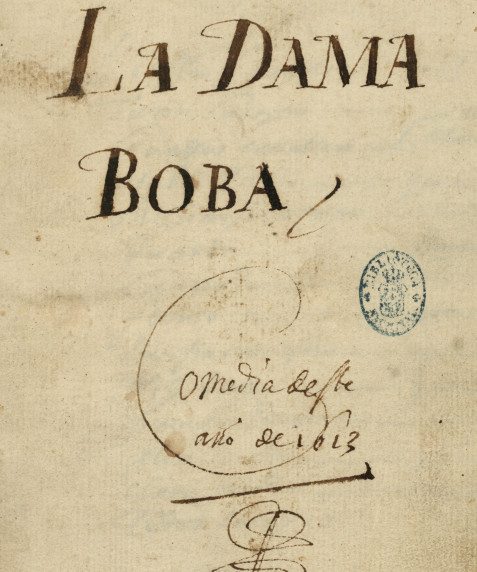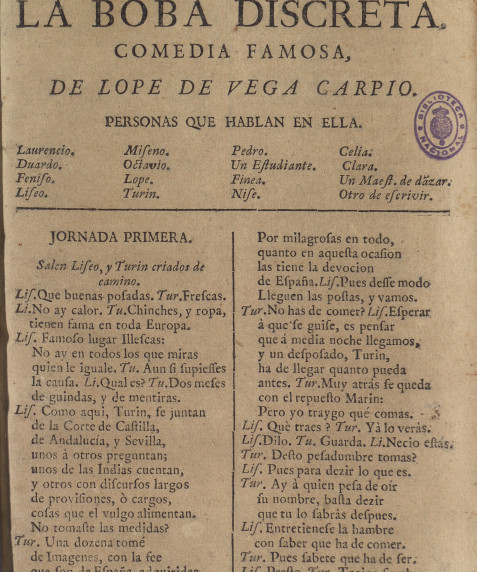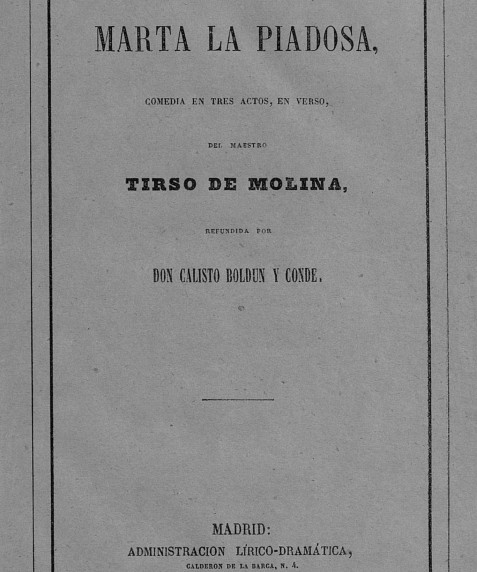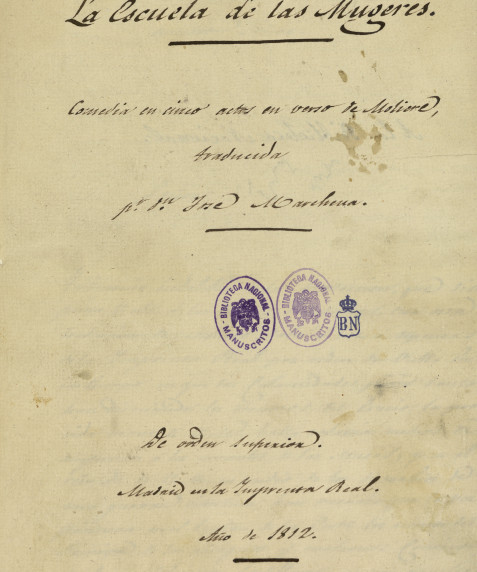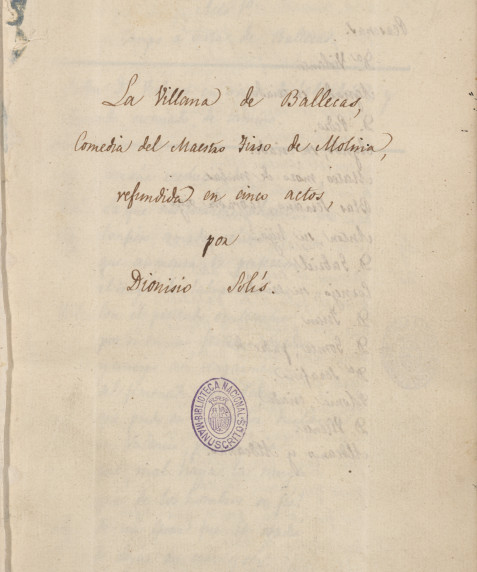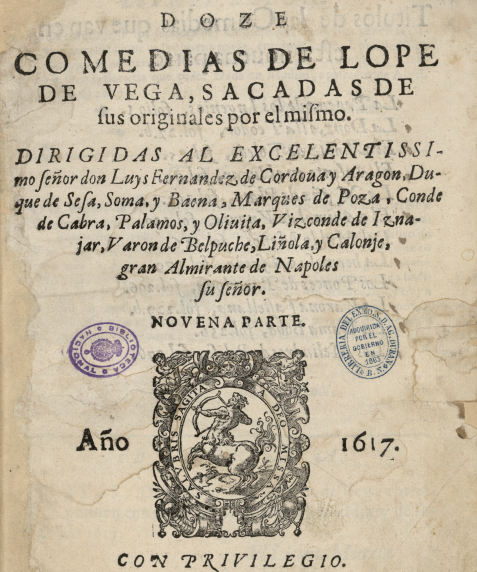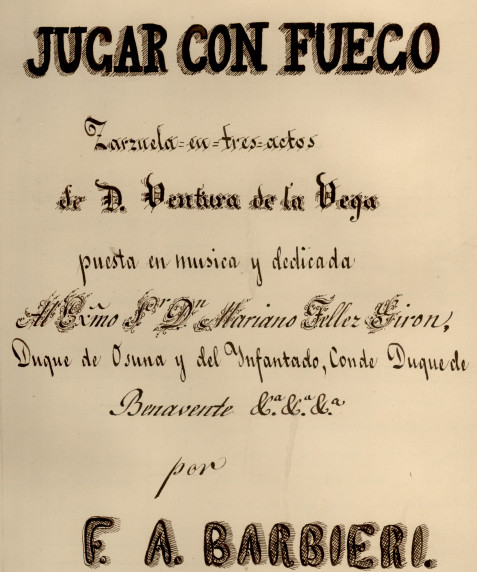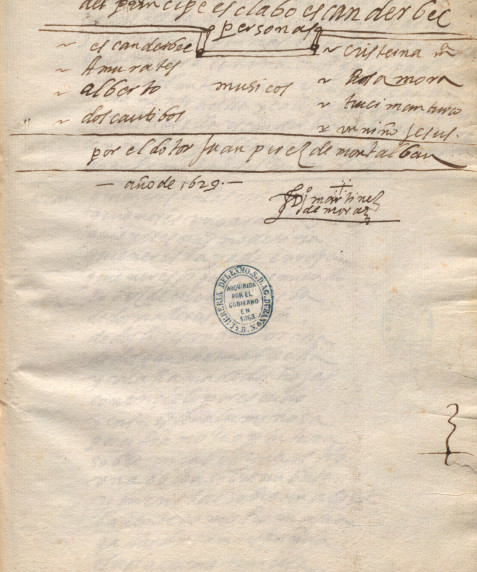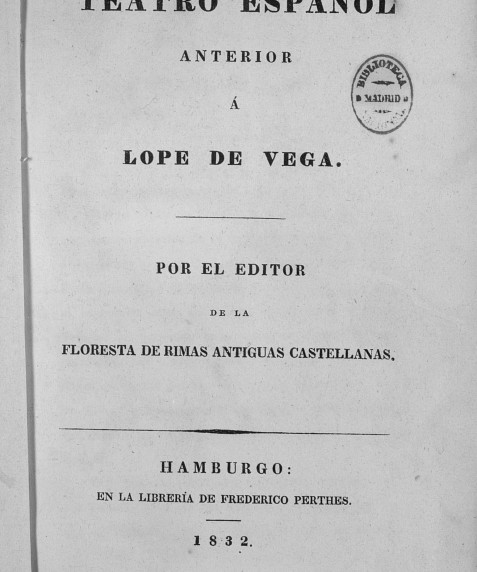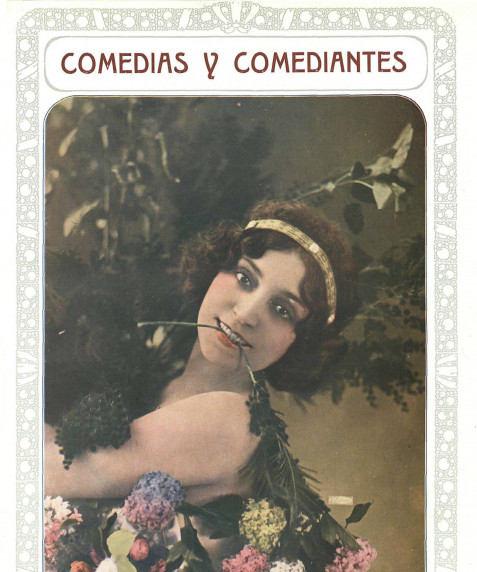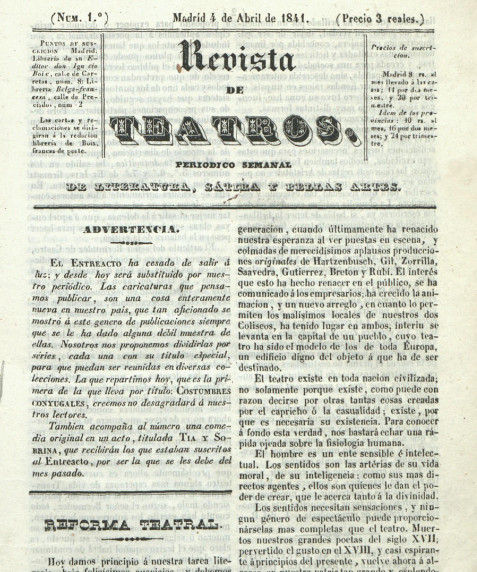Theatre
The collection has been incorporating from its origins: dramatic works (comedy or broken down into parts of comedies, collections facticias …), booklets belonging to the gender of the lyrical theatre, studies on theatre, and subsequently funds related to the cinema (cinematographic scripts, posters, brochures, etc.)
History of the collection
The old “Theatre Section” replaced the “Dramatic Works Section” created in 1873 in the Department of Prints. It was one of the two major departments into which the Biblioteca Nacional was divided; the other being Manuscripts.
It was organised into 12 subdivisions:
- General history of theatre and dramatic literature and treatises on dramatic art
- Universal collections
- Greek theatre
- Latin theatre
- Lope de Vega. The best mayor: the king
- Latin theatre of the Middle Ages
- Spanish theatre, divided into six subsections
- Portuguese theatre Italian theatre
- French theatre
- English theatre
- German theatre
- Other theatres
With the transfer of the Biblioteca Nacional to its current building in 1894 the two-department structure was maintained (a project in the regulations of 1876 had structured it into six, although the “Dramatic Works Section” had remained with Prints). Together with the new “Cervantes Section” it was kept in the Department of Prints under the name “Theatre Room”.
In the mid 1980s, structural changes were made at the Biblioteca Nacional that led to the official elimination of that Section. The Office of Reserved Prints was created, and within it, a short-lived “Golden Age Section” that was responsible for the old Cervantes and Theatre Sections. As a result, new acquisitions immediately stopped coming in to the theatre collection. Finally, from 1986, the printed theatre collection was included in the Manuscripts, Incunabula and Rare Books Service, until the subsequent inclusion of the assets in the Printed Reserve Service created in 2006.
Several librarians paid particular attention to the rich theatre collection. Although not well known for his work as a librarian, special mention should be made of Vicente García de la Huerta, royal scribe between 1761 and 1766, author of the Catálogo alphabético de las comedias, tragedias, autos, zarzuelas, entremeses y otras obras correspondientes al Teatro Hespañol, the last volume of the 16 that comprise his work Teatro Hespañol. Head librarian from 1811 to 1812, Leandro Fernández de Moratín, author of three catalogues: Catálogo de piezas dramáticas publicadas en España durante el siglo XVII y autores que las escribieron, Catálogo histórico y crítico de piezas dramáticas anteriores a Lope de Vega and Catálogo de piezas dramáticas publicadas en España desde el principio del siglo XVIII hasta la época presente (1825). The work of the last royal librarian and first director of the library between 1854 and 1861, Agustín Durán, was essential from the point of view of increasing the collection, and his own assets were incorporated after his death. Later directors included the playwrights Juan Eugenio Hartzenbusch (1862-1875) and Manuel Tamayo y Baus (1884-1898).
The holdings
The collection consists of 55,264 volumes under call number T and 644 collections under call number Ti (Incomplete theatre: including publications with successive volumes that were not published or were not added to the library).
From its creation, all assets related to theatre were incorporated into the section: dramatic works (comedias sueltas o desglosadas, parts of comedies, factitious collections…), librettos belonging to the lyrical theatre genre, studies on theatre… Subsequently, works of similar style such as film were added: the section houses film scripts with complementary graphic documentation, spanning the years from the late 1960s to the early 1980s; advertising flyers, posters, distribution catalogues, etc. for films and plays.
Significant assets contributed to increasing the collection, particularly the following:
- The library of Juan Nicolás Böhl de Faber, acquired in 1849, which has an interesting collection of 50 factitious volumes of comedies printed in the 18th century and some in the 17th century.
- The collection of Agustín Durán, whose facet as a bibliophile included, among other aspects, theatre collections. His library was sold by his widow to the Biblioteca Nacional in 1863. The library comprised 3,700 volumes and files, with an ample collection of dramatic works, including the collection of comedies by Lope de Vega in 25 tomes; the “partes extravagantes” of comedies by Lope (so called because they were published in different points of Spain, competing with the leading publishers of the great playwright); 48 by various authors, published between 1652 and 1704; works by Torres Naharro, Lope de Rueda, Timoneda, Cervantes, Guillén de Castro, Tirso de Molina, Pérez de Montalbán, etc., as well as several collections of comedias sueltas and entremeses (one-act farces). Together with these printed works, there are several collections of individual manuscript dramatic works, including autographs by Lope de Vega, Vélez de Guevara, Calderón, Fernández de Moratín and other authors.
- The library of the Duke of Osuna and Infantado was purchased in 1886. In addition to its great wealth of manuscripts (over 1,000 manuscript comedies, many autographs by Calderón, Lope de Vega, Tirso de Molina…), there were over 35,000 printed volumes.
- Finally, the library of Pascual de Gayangos, bibliophile and scholar. Among the 22,000 prints that were incorporated with these assets are the many factitious volumes of comedies.


